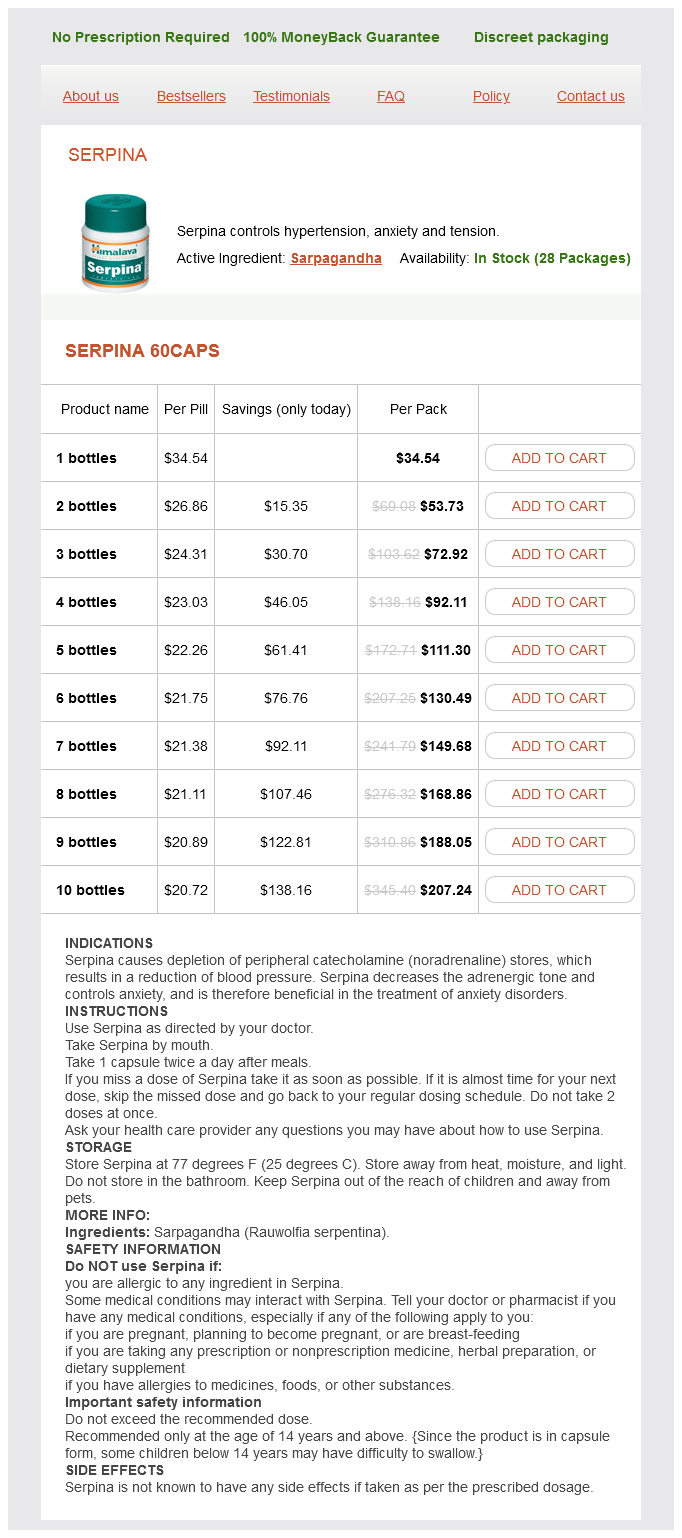

Cornelia R. Graves MD
Serpina dosages: 60 caps
Serpina packs: 1 bottles, 2 bottles, 3 bottles, 4 bottles, 5 bottles, 6 bottles, 7 bottles, 8 bottles, 9 bottles, 10 bottles

Shimada K, et al: Role of the width of the surgical margin in a hepatectomy for small hepatocellular carcinomas eligible for percutaneous native ablative remedy, Am J Surg 195(6):775�781, 2008. Shirabe K, et al: Factors linked to early recurrence of small hepatocellular carcinoma after hepatectomy: univariate and multivariate analyses, Hepatology 14(5):802�805, 1991. Sugawara Y, et al: Splenectomy in sufferers with hepatocellular carcinoma and hypersplenism, J Am Coll Surg 190(4):446�450, 2000. Takayama T, et al: Randomized comparability of ultrasonic vs clamp transaction of the liver, Arch Surg 136:922�928, 2001. Torzilli G, et al: No-mortality liver resection for hepatocellular carcinoma in cirrhotic and noncirrhotic sufferers: is there a method Torzilli G, et al: the surgical margin in liver resection for hepatocellular carcinoma: a real downside or not Torzilli G, et al: Hepatectomy for stage B and stage C hepatocellular carcinoma in the Barcelona Clinic Liver Cancer classification: results of a potential analysis, Arch Surg 143(11):1082�1190, 2008. Uchiyama K, et al: Risk components for postoperative infectious complications after hepatectomy, J Hepatobiliary Pancreat Sci 18:67�73, 2011. Initial experience with a multimodal enhanced recovery programme in sufferers undergoing liver resection, Br J Surg 95(8):969�975, 2008. Yamamoto J, et al: Perioperative blood transfusion promotes recurrence of hepatocellular carcinoma after hepatectomy, Surgery 115(3):303� 309, 1994. Yamanaka J, et al: Impact of preoperative planning using digital segmental volumetry on liver resection for hepatocellular carcinoma, World J Surg 31:1249�1255, 2007. Yamazaki S, et al: Transfusion standards for contemporary frozen plasma in liver resection: a 3 + three cohort growth examine, Arch Surg 146(11):1293� 1299, 2011. Yamazaki S, et al: Criteria for drain elimination following liver resection, Br J Surg 99(11):1584�1590, 2012. Yamazaki S, et al: Prophylactic impression of endoscopic therapy for esophageal varices in liver resection: a prospective study, J Gastroenterol 49(5):917�5922, 2014. Yonekawa C, et al: Effectiveness of mixing plasma trade and continuous hemodiafiltration in sufferers with postoperative liver failure, Artif Organs 29(4):324�328, 2005.
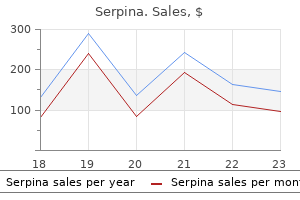
Attempt at characterization of histologic subtypes, Am J Surg Pathol 6(7):599�612, 1982. Gururangan S, et al: Primary hepatic tumours in kids: a 26-year evaluate, J Surg Oncol 50(1):30�36, 1992. Hagiwara M, et al: Multimodal therapy of advanced grownup Wilms tumor, J Urol 127(3):535�538, 1982. Hata Y: the clinical features and prognosis of hepatoblastoma: followup research accomplished on pediatric tumors enrolled in the Japanese Pediatric Tumor Registry between 1971 and 1980. Part I: committee of malignant tumors, Japanese Society of Pediatric Surgeons, Jpn J Surg 20(5):498�502, 1990. The scientific importance of histologic and serologic parameters, J Clin Gastroenterol 9(1):105�110, 1987. Herlin T, et al: Treatment of unresectable hepatoblastoma with cisplatin, vincristine and 5-fluorouracil, Eur J Pediatr 147(5):514�515, 1988. Hernandez-Siverio N, et al: [Solitary, non-parasitic hepatic cyst in childhood], An Esp Pediatr 28(3):269�270, 1988. Hiyama E, et al: High expression of telomerase is an independent prognostic indicator of poor consequence in hepatoblastoma, Br J Cancer 91(5):972�979, 2004. Honda M, et al: Case report: intrahepatic cholangiocarcinoma with rhabdoid transformation, J Gastroenterol Hepatol 11(8):771�774, 1996. Ikeda H, et al: Association between hepatoblastoma and really low delivery weight: a development or an opportunity Inoue S, et al: Successful resection of a large hepatoblastoma in a young adult: report of a case, Surg Today 25(11):974�977, 1995. Isaacs H Jr: Perinatal (congenital and neonatal) neoplasms: a report of one hundred ten instances, Pediatr Pathol 3(2�4):165�216, 1985. Isaacs H Jr: Fetal and neonatal hepatic tumors, J Pediatr Surg 42(11): 1797�1803, 2007. Ito E, et al: Type 1a glycogen storage illness with hepatoblastoma in siblings, Cancer 59(10):1776�1780, 1987.
Diseases
To prevent drug toxicity, renal operate must be estimated and downward adjustments in dosage made accordingly. Thus it is important to know which medicine are eliminated via renal or hepatic mechanisms. If the latter is the case, then it is necessary to characterize the drug as being of low or excessive clearance. If low, enzyme exercise and binding are determinants of clearance, and bioavailability is unchanged. If high, liver blood circulate is the only real determinant of clearance, and blood flow, binding, and enzyme exercise all have an result on bioavailability. The decreased rate of elimination of inhalation anesthetics, ensuing from declining pulmonary function with growing older, is one other necessary consideration for elderly patients receiving common anesthesia. Disease-Induced Changes It is widespread for elderly sufferers to have multiple chronic diseases such as diabetes, glaucoma, hypertension, coronary artery disease, and arthritis. Many aged patients receive as many as 12 medicine concurrently, resulting in many opportunities for drug-drug interactions and opposed drug reactions (Table three. A drug interplay refers to a change in magnitude or length of the pharmacological response of one drug because of the presence of another drug. Drug interactions could cause either extra rapid or slower elimination, with plasma concentrations rising or decreasing above or under minimal effective values. There are many mechanisms by which medicine interact, together with acceleration or inhibition of metabolism, displacement of plasma protein binding, impaired absorption, altered renal clearance, modifications in receptors, and changes in electrolyte steadiness, physique fluid pH, or rates of protein synthesis. Many drug interactions are properly documented within the literature, and these potential interactions must be taken into consideration when multiple drugs are prescribed. Moreover, a disease may improve the chance of antagonistic drug reactions or preclude the use of the otherwise most effective or most secure drug for therapy of another downside. For instance, anticholinergic drugs may trigger urinary retention in males with enlarged prostate glands or precipitate glaucoma, and drug-induced hypotension may cause ischemic occasions in patients with vascular illness.
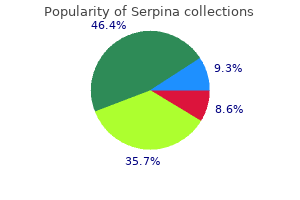
Public health measures in Europe and the United States ought to be implemented, such as prevention of drug-induced liver harm and reduction of extreme alcohol consumption. Agarwal B, et al: Evaluation of coagulation abnormalities in acute liver failure, J Hepatol fifty seven:780�786, 32, 2012. Alam S, et al: Natural course of fulminant hepatic failure: the scenario in Bangladesh and the variations from the West, Saudi J Gastroenterol 15:229�233, 2009. Arora H, et al: Long-term survival after sixty seven hours of anhepatic state due to major liver allograft nonfunction, Liver Transpl sixteen:1428�1433, 2010. Ascher N, et al: Liver transplantation for fulminant hepatic failure, Arch Surg 128:415�425, 1993. Azoulay D, et al: Auxiliary partial orthotopic versus standard orthotopic whole liver transplantation for acute liver failure: a reappraisal from a single heart by a case-control research, Ann Surg 234:723�731, 2001. Barshes N, et al: Risk stratificationof grownup sufferers undergoing orthotopic liver transplantation fot fulminant hepatic failure, Transplantation eighty one:195�201, 2006. Belghiti J, et al: Temporary portocaval anastomosis with preservation of caval circulate throughout orthotopic liver transplantation, Am J Surg 169:277�279, 1995. Bernal W, et al: Use and consequence of liver transplantation in acetaminophen-induced acute liver failure, Hepatology 27:1050�1055, 1998. Bernal W, et al: Blood lactate as an early predictor of end result in paracetamol-induced acute liver failure: a cohort research, Lancet 359:558�563, 2002. Bernal W, et al: Arterial ammonia and scientific threat components for encephalopathy and intracranial hypertension in acute liver failure, Hepatology forty six:1844�1852, 2007. Bernal W, et al: Outcome after ready record for emergency liver transplantation in acute liver failure: a single centre experience, J Hepatol 50:306�313, 2009. Bernuau J: Selection for emergency liver transplantation, J Hepatol 19(3):486�487, 1993. In Oxford textbook of medical hepatology, ed 2, 1986a, Oxford Medical Publications.
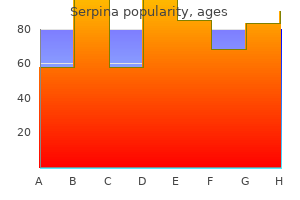
Treatment of hepatic tumors, either primary or metastatic, with chemotherapy (Verset et al, 2010) or locoregional therapy (Dolak et al, 2013) has additionally been reported to result in main hemobilia. Vascular Disorders Vascular issues account for much less than about 10% of instances of clinically important hemobilia (Green et al, 2001; Yoshida et al, 1987) (see Chapter 21). Hepatic artery aneurysms are the most common major vascular disorder producing hemobilia. Other, much less widespread causes embody angiodysplasia, arteriovenous malformations, and hemangiomas (Vishnevsky et al, 1991). The frequency of true aneurysms (Ryan et al, 2002) of the hepatic artery or its branches (Maralcan et al, 2003; Morioka et al, 2004) rupturing into the biliary tract is diminishing with the disappearance of mycotic aneurysms, leaving only aneurysms of atherosclerotic origin or those related to polyarteritis nodosa (Battula et al, 2012; Dutta et al, 2004), fibromuscular dysplasia (Shussman et al, 2008), or trauma. Sometimes, vascular lesions associated with arterial hypertension can lead to hemobilia. Gallstones In gallstone illness, microscopic hemorrhage can be demonstrated in certainly one of 4 cases with stones within the gallbladder and in one of three with stones within the frequent duct (Gad, 1962). Macroscopic hemobilia is rare, constituting lower than 10% of all major hemobilia circumstances reported (Green et al, 2001; Sandblom, 1972; Yoshida et al, 1987). B,Righthepaticarterial angiogram demonstrates pseudoaneurysm (arrow) with profitable embolization,C. A, Computed tomography demonstrates active contrast extravasation throughout the gallbladder. The stones could trigger profuse, exsanguinating hemobilia; 11 of 20 patients in one report bled to dying. In addition to extrahepatic gallstone illness, hepatolithiasis has been associated with hemobilia. One case series of 867 sufferers who underwent operative intervention for hepatolithiasis, eight.
Syndromes
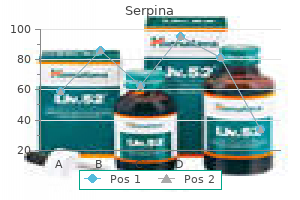
During the dissection of its posterior surface, the consistent branch from the right posterior face of the proper portal vein to the paracaval portion of the caudate lobe is ligated. After isolation and retraction of the best department of the hepatic artery, the portal bifurcation is identified. The posterior passage of the curved dissector within the bifurcation is facilitated by a slight caudal traction of the main portal trunk. Under laparoscopy, magnification permits for clear identification of the vascular parts, that are dissected backward up to the right portal pedicle, with proper portal vein and hepatic artery dissection and encirclement (Soubrane et al, 2014). The description of the fibrous sheath that envelops the whole portal triad and extends into the liver (Galperin et al, 1989; Launois & Jamieson, 1992a; Lazorthes et al, 1993) has led to the development of an alternative technique of inflow control of the liver. This so-called glissonian approach includes the dissection of the entire sheath of the pedicle instantly after division of a considerable amount of the hepatic tissue to attain the pedicle, which is surrounded by a sheath derived from the Glisson capsule. Control of the intrahepatic portal triad is achieved by a hepatotomy near the corresponding portal pedicle. Thereafter, either the proper or the left portal pedicle is isolated and secured utilizing a big curved clamp and encircled with rubber tape. After guaranteeing good positioning of the clamp and enough demarcation of the resected hemiliver, the corresponding pedicle is ligated and transected using a vascular stapler. In eighty patients present process main liver resection, though hilar dissection was quicker using the glissonian approach, shorter pedicular clamping time, decreased cytolysis, and lower material-related prices have been reported utilizing the basic intrafascial strategy. Segmental Selective Clamping Segmental selective clamping can be useful for delineating the territory of some tumors, nevertheless it requires troublesome segmental or subsegmental resection. Sectional territories may be delineated using varied methods of control of the respective sections (see Chapter 108B). Isolated control of single segments was first described within the Nineteen Eighties (Makuuchi et al, 1983; Shimamura et al, 1986). Similarl to what could also be performed for the resection of 1 hemiliver, the intrahepatic glissonian access permits attaining resection of both proper and left liver segments and subsegments based mostly on specific landmarks, as described by Machado and colleagues (2003, 2004, 2006).
In general, as quickly as an effective dose is established, a regimen of single-daily oral dosing is efficient for symptomatic treatment. Lithium is most often administered as a carbonate salt however is also administered as a citrate salt. Orally administered lithium is quickly absorbed and is current as a soluble ion unbound to plasma proteins. Approximately 95% of a single dose is eradicated in the urine, with a half-life of 20�24 hours; steady-state plasma concentrations are reached 5�6 days after initiation of treatment. Approximately 80% of filtered lithium is reabsorbed by the renal proximal tubules. Thus the concentration of lithium in plasma have to be monitored routinely to ensure sufficient therapeutic levels without toxicity. Many unwanted effects are an extension of the general pharmacological actions of those medication and end result from blockade of several neurotransmitter receptors (Table sixteen. In addition, because most of these agents are metabolized by cytochrome P450s, their plasma levels could be significantly influenced by the concurrent use of different compounds, both enzyme inducers and inhibitors, as properly as by pharmacogenomics (Chapters 3 and 4). Both the everyday and atypical antipsychotics have a boxed warning indicating an increased threat of mortality in aged patients treated for dementia-related psychoses. Typical Antipsychotics All typical antipsychotics block muscarinic cholinergic receptors, resulting in dry mouth, urinary retention, and reminiscence impairment (Chapter 8). These effects are extra common with the lower potency brokers corresponding to chlorpromazine and thioridazine. They additionally block 1-adrenergic and histamine (H1) receptors, leading to orthostatic hypotension and reflex tachycardia, and sedation, respectively. Acute dystonic reactions, characterized by spasms of the facial or neck muscles, may be evident, as well as a parkinsonian syndrome characterised by bradykinesia, rigidity, tremor, shuffling gait, and akathisia or motor restlessness. These symptoms happen early (1�60 days) after initiation of drug remedy, enhance if the antipsychotic is terminated, and, if extreme sufficient to trigger noncompliance, could additionally be handled with centrally lively anticholinergic compounds corresponding to those used for Parkinson illness (Chapter 15). In common, the high-potency butyrophenones, corresponding to haloperidol, are associated with a higher incidence of extrapyramidal unwanted effects, whereas the low-potency phenothiazines, corresponding to chlorpromazine, are associated with a greater incidence of autonomic unwanted effects and sedation.
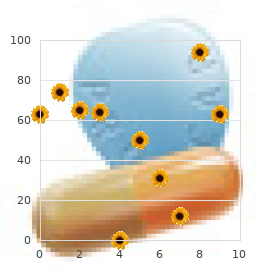
This interval, throughout which the surgeon applies gentle compression of the transected surface, can be utilized to reexamine the adequacy of the transection line with respect to the vascularization and the oncologic margin. The period of revascularization gives the surgeon a possibility to visualize the wholesome colour of the remnant liver. Intraoperative ultrasonography may be performed to verify the adequacy of influx and outflow of the remnant liver as nicely as examine the progress and course of transection in relation to tumor margin. Intermittent clamping in diseased liver has no important deleterious results even when the cumulative clamping time is up to 1 hour (Takayama et al, 1998). The most essential end result, however, was improved tolerance of diseased liver to intermittent clamping (Belghiti et al, 1999). Thus the application of intermittent clamping in normal livers has extended the entire clamping duration by up to 3 hours, which allows surgeons to carry out even complex hepatic resection with minimal blood loss (Sakamoto et al, 1999). The wide security margin of intermittent pedicle clamping has served to promote its secure use in donor hepatectomy in livingdonor liver transplantation. This has neither jeopardized donor security nor compromised graft operate (Imamura et al, 2002, 2004). The better tolerance of intermittent ischemia has stimulated investigators to discover the concept of preconditioning. Preconditioning A newer perspective on inflow vascular clamping has emerged from examine of the biologic response to ischemia-reperfusion (Clavien et al, 2000; Hardy et al, 1996). A interval of ischemia adopted by reperfusion of the liver not only protects the liver from the negative results of any subsequent period of ischemia, but additionally may shield distant organs from the systemic effects of organ ischemia. Clavien and colleagues (2000) revealed that an preliminary period of ischemia (10 minutes) followed by reperfusion (10 minutes) protects the liver in opposition to subsequent prolonged ischemia and postulated that a few of the E. Treatment: Resection Chapter 106 Vascular isolation methods in hepatic resection 1617 benefits of intermittent clamping may very well result from the influence of the primary clamp-unclamp sequence as a preconditioning remedy. In addition, preconditioning adopted by continuous clamping could have the benefit of avoiding blood loss through the unclamped interval, although no main differences have been shown when it comes to blood loss between the continual and intermittent clamping approaches. A prospective randomized research showed that this protecting technique in opposition to hepatic ischemia was environment friendly, particularly within the presence of steatosis (Clavien et al, 2003).
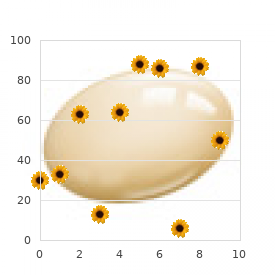
Planned vascular clamp Anesthesia Anesthetic administration for ex vivo liver resections is just like that for liver transplantation (see Chapters 24 and 113). Maintaining patient temperature is a key component of anesthesia management and contains the use of forced-air warming blankets, warming of all fluids, and inserting the patient on heated gel pads throughout surgery. Access for venovenous bypass, which initially was achieved by cutdowns, has been simplified by percutaneous insertion techniques. When an ex vivo process is chosen, percutaneous catheters are positioned within the inner jugular vein or within the subclavian vein and within the femoral vein for the cava portion of the bypass circuit. In an ex vivo process, the anhepatic part usually lasts from 2 to 4 hours, and attention have to be paid to coagulation throughout this era. As for liver transplantation, we give recent frozen plasma to meet volume requirements during this time and reduce the use of crystalloid. The maneuver is repeated as many times as could additionally be required over the course of reperfusion. Surgical Procedure Pichlmayr and Hauss (1994) described the procedure of ex vivo liver resection in the second version of this textbook; they E. Treatment: Resection Chapter 109 Ex vivo and in situ hypothermic hepatic resection 1677 three. The proper adrenal vein should be ligated and divided, and small caudate veins must be divided if accessible. The large size of the tumor could make access to the caudate veins difficult, during which case they can be addressed on the back table. If the tumor is infiltrating the diaphragm, the portion of the diaphragm involved is resected en bloc with the tumor. Clamp placement, subsequent transection traces, and the need for vascular conduits for reconstruction are assessed; options for reconstruction are contemplated before removing the liver. Planning for these eventualities ought to occur before placement of clamps and removing of the liver. The abdomen is loosely packed and lined, and a spotlight is turned to the back desk. Great care must be taken not to divide segmental arteries that offer parts of the liver which would possibly be to stay, because their caliber is too small to reconstruct with confidence. Parenchymal transection may be performed using a selection of methods, together with ultrasonic and water-jet dissection and even sharp division with a knife.
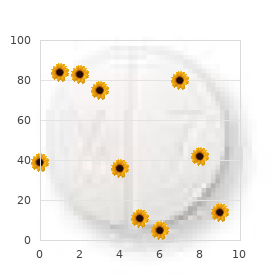
When the stomach is entered, an effort must be made to discover a airplane of dissection simply outside the liver capsule, as a result of subcapsular dissection, though easier and sooner, may find yourself in disastrous hemorrhage. This is especially true in retransplantation, the place vascularized adhesions can cause huge bleeding; in these cases, staying on the capsule is especially crucial. When exposure has been obtained, it could be very important assess the pathology and resolve on the technical strategy that most closely fits the circumstances. A surgeon who insists on following the same steps in unvarying order for all liver recipients experiences unnecessary hardship. The following is a description of the fundamental elements of the recipient operation, with particular emphasis on variations of host hepatectomy. Venovenous Bypass the most critical stage of the recipient operation is the anhepatic phase, throughout which the diseased liver is removed and replaced with the allograft. C, Simple subcostal incision which could be transformed to a hockey-stick incision by an upper midline extension, which may embody xyphoid resection. This technique permitted the hepatectomy and implantation to be done with significant reductions in blood loss, intestinal edema, and postoperative renal failure. Infants and small children weighing lower than 15 kg tolerate venous occlusion reasonably well. Exposure, particularly of the suprahepatic vena cava, could be facilitated by means of self-retaining retractors. Pump-driven venovenous bypass used to decompress the systemic and splanchnic venous beds in the course of the anhepatic phase of liver transplantation. The groin and venous return cannulae, when used, are often positioned percutaneously in the left groin and right neck. Alternatively, a temporary end-to-side portocaval shunt can be constructed to forestall mesenteric congestion during the anhepatic part. Hilar Dissection In "straightforward" circumstances, the person hilar buildings could be readily skeletonized.
Randall, 31 years: When this is achieved, the mean focus for every time interval has reached a plateau.
Armon, 41 years: Nagino M, et al: Right or left trisegment portal vein embolization earlier than hepatic trisegmentectomy for hilar bile duct carcinoma, Surgery 117:677�681, 1995.
Tippler, 21 years: Chlorpromazine and many different psychoactive medication may trigger hypothermia, and alcohol tends to increase this impact.
References
Realice búsquedas en nuestra base de datos: